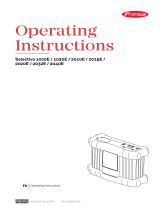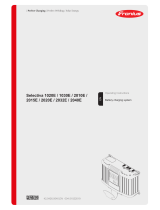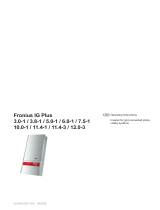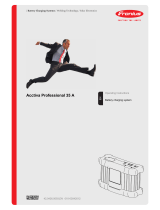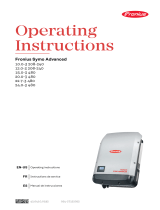
1
Table of contents
General remarks ........................................................................................................................................... 2
Basic system principle.............................................................................................................................. 2
Charger concept ...................................................................................................................................... 2
Warning notices affixed to the charger..................................................................................................... 2
Before commissioning ................................................................................................................................... 3
Safety ....................................................................................................................................................... 3
Utilisation in accordance with „intended purpose“ .................................................................................... 3
Mains connection ..................................................................................................................................... 3
Safety strategy - standard protective features.......................................................................................... 4
Controls and connections .............................................................................................................................. 4
General remarks ...................................................................................................................................... 4
Control panel ............................................................................................................................................ 4
Plugging in options ................................................................................................................................... 5
Connections on housing underside .......................................................................................................... 5
Connections on top of housing................................................................................................................. 5
Removing cover ....................................................................................................................................... 6
Installation ................................................................................................................................................ 6
Fitting relay (optional) ............................................................................................................................... 7
Charging the battery ...................................................................................................................................... 7
Starting charging ...................................................................................................................................... 7
Charging................................................................................................................................................... 8
Finishing charging .................................................................................................................................... 8
Interrupting charging ..................................................................................................................................... 8
Stopping charging .................................................................................................................................... 8
Restarting charging .................................................................................................................................. 9
Setup menu ................................................................................................................................................... 9
General remarks ...................................................................................................................................... 9
Opening the setup menu .......................................................................................................................... 9
Selecting characteristic type .................................................................................................................. 10
Back-up mode (Acctiva series only) .............................................................................................................11
Explanation .............................................................................................................................................11
Access .................................................................................................................................................... 11
Back-up mode .........................................................................................................................................11
Stopping back-up mode ......................................................................................................................... 12
Trickle charging (Acctiva series only) .......................................................................................................... 12
Explanation ............................................................................................................................................ 12
Reactivating a deep-discharge battery (Acctiva series only) ....................................................................... 12
Explanation ............................................................................................................................................ 12
Troubleshooting........................................................................................................................................... 13
Safety ..................................................................................................................................................... 13
Activation of protective features ............................................................................................................. 13
Charging errors ...................................................................................................................................... 14
Technical data ............................................................................................................................................. 14
Explanation ............................................................................................................................................ 14
Fronius Worldwide




















